MATE (/ˈmɑːtɛ/) is a desktop environment composed of free and open-source software that runs on Linux, BSD, and illumos operating systems.
- free and open-source
- illumos
- bsd
1. Name
MATE is named after the South American plant yerba mate and tea made from the herb, mate.[1] The name was originally all capital letters to follow the nomenclature of other Free Software desktop environments like KDE and LXDE. The recursive backronym "MATE Advanced Traditional Environment" was subsequently adopted by most of the MATE community, again in the spirit of Free Software like GNU ("GNU's Not Unix!"). The use of a new name, instead of GNOME, avoids naming conflicts with GNOME 3 components.
2. History
An Argentine user of Arch Linux, named Perberos started the MATE project[2] to fork and continue GNOME 2 in response to the negative reception of GNOME 3, which had replaced its traditional taskbar (GNOME Panel) with GNOME Shell. MATE aims to maintain and continue the latest GNOME 2 code base, frameworks, and core applications.[3][4][5]
MATE was initially announced for Debian on November 8, 2013, at its official website.[6]
MATE became an official Arch Linux community package in January 2014.
3. Component Applications
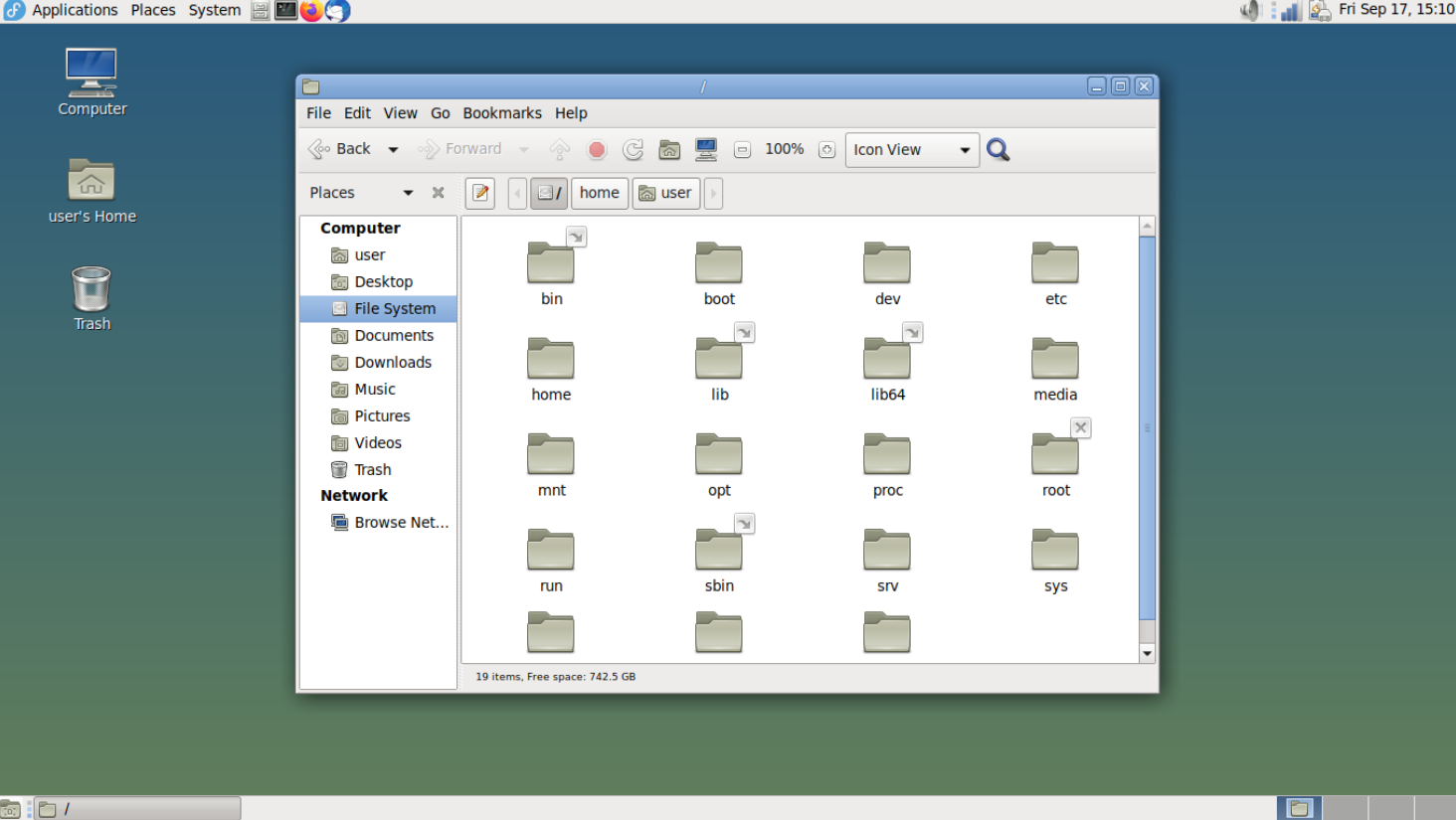
MATE has forked a number of applications which originated as GNOME Core Applications, and developers have written several other applications from scratch. The forked applications have new names, most of them from Spanish.[7]
| Application Name | Spanish
Translation |
Forked From | Description | Features |
|---|---|---|---|---|
| Atril | lectern | Evince | document viewer | EPUB support
caret navigation support [8] |
| Caja | box | GNOME Files(Nautilus) | File Manager | Extension support [9] |
| Engrampa | staple | Archive Manager(File Roller) | File archiver | |
| Eye of MATE | Image viewer | |||
| MATE Calculator | Calculator | |||
| MATE Control Center | MATE desktop settings | |||
| MATE System Monitor | Graphical resource monitor | |||
| MATE Terminal | GNOME Terminal | Terminal emulator | ||
| marco | frame | Metacity | MATE window manager | |
| Mozo | waiter | Alacarte | Menu editor | |
| Pluma | pen | Gedit | Text editor |
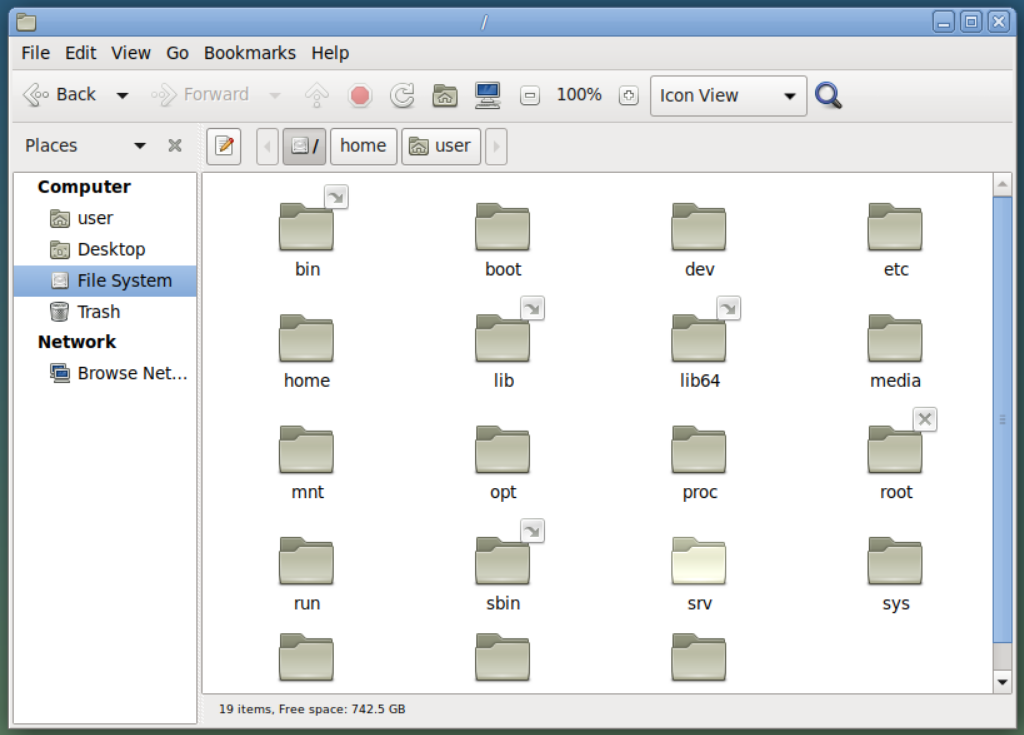
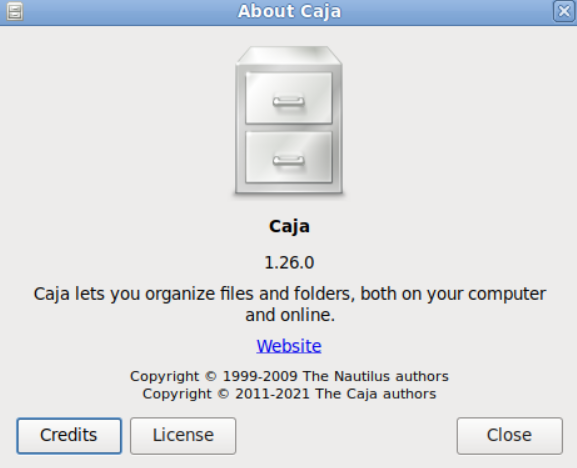
4. Development
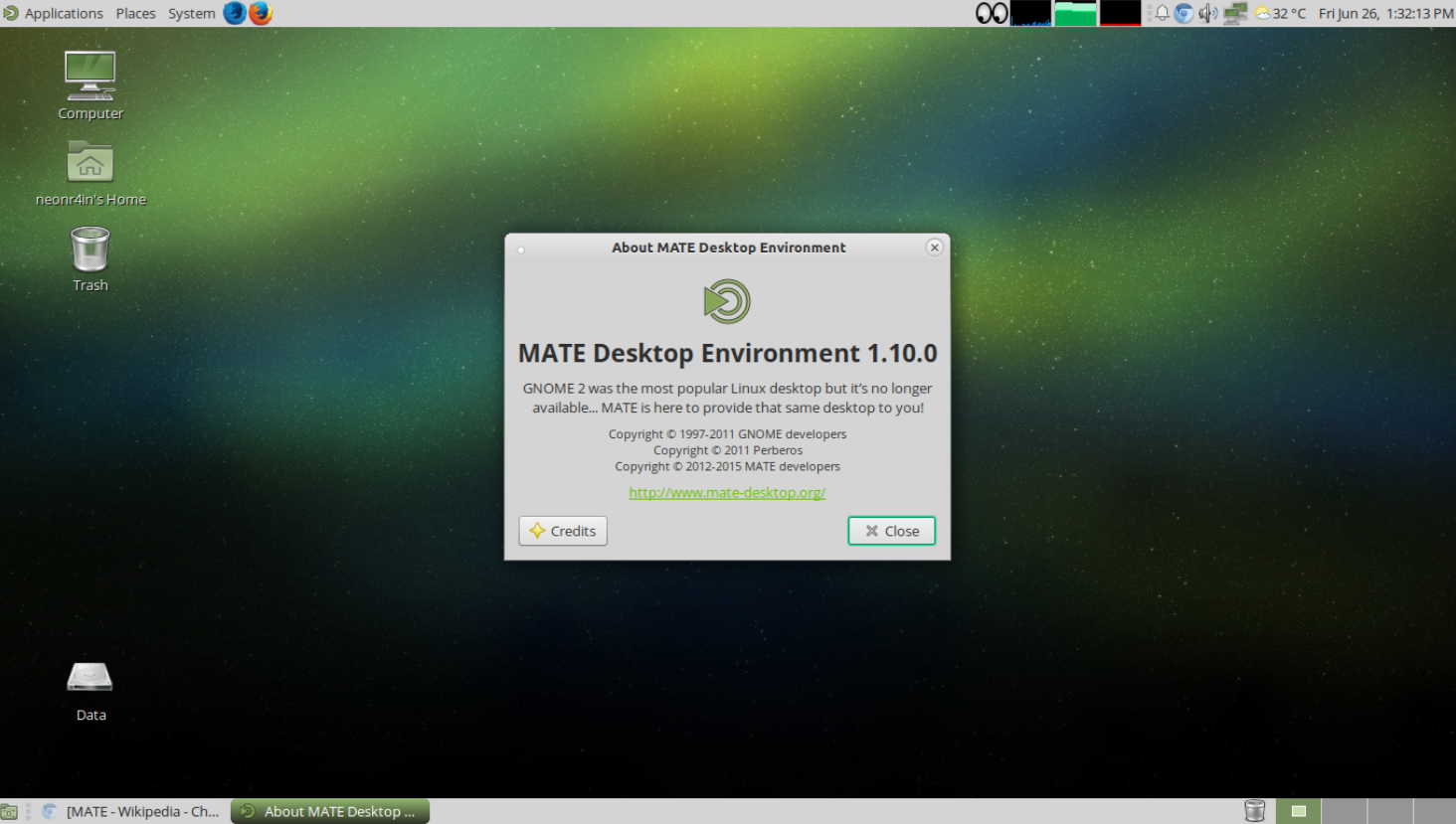
MATE fully supports the GTK 3 application framework. The project is supported by Ubuntu MATE lead developer Martin Wimpress and by the Linux Mint development team:
We consider MATE yet another desktop, just like KDE, Gnome 3, Xfce etc... and based on the popularity of Gnome 2 in previous releases of Linux Mint, we are dedicated to support it and to help it improve. The most popular Linux desktop was, and arguably is, Gnome 2.[10]
New features have been added to Caja such as undo/redo[11] and diff viewing for file replacements.[12] MATE 1.6 removes some deprecated libraries, moving from mate-conf (a fork of GConf) to GSettings, and from mate-corba (a fork of GNOME's Bonobo) to D-Bus.
One of the aims of the MATE developers is to provide a traditional user experience while using the newest technologies. In MATE 1.20, which was released in February 2018, support for HiDPI was added and the GTK+ version got increased to 3.22. The MATE 1.22 release migrated many programs from Python 2 to Python 3 and from dbus-glib to GDBus. In an upcoming version, support for Wayland will be added.[13]
5. Release History
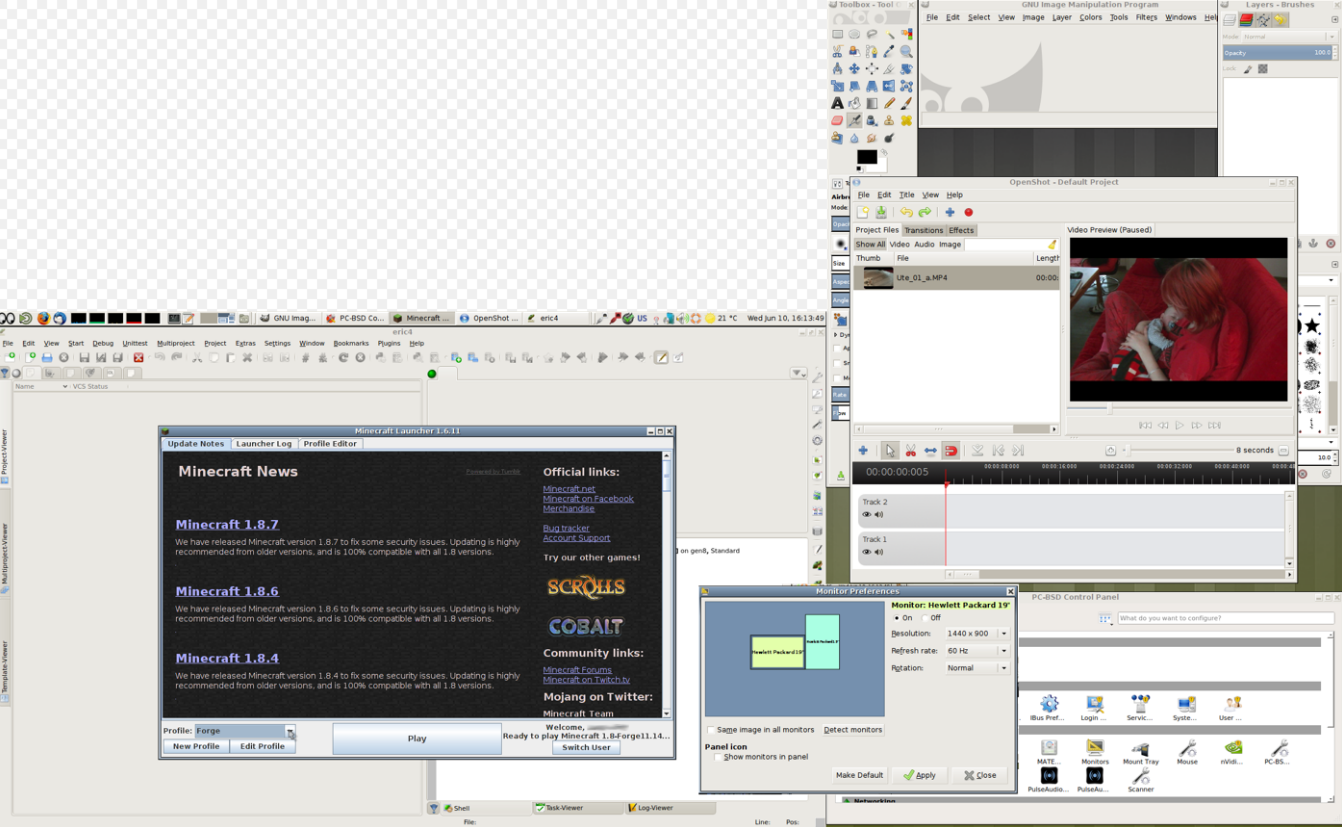
| Date | Version |
|---|---|
| 2011-06-18 | Announced at Arch Linux forum[14] |
| 2011-08-19 | |
| 2012-04-16 | 1.2 |
| 2012-07-30 | 1.4 |
| 2013-04-02 | 1.6 |
| 2014-03-04 | 1.8 |
| 2015-06-11 | 1.10 |
| 2015-11-05 | 1.12 |
| 2016-04-08 | 1.14 |
| 2016-09-21 | 1.16 |
| 2017-03-13 | 1.18 |
| 2018-02-07 | 1.20 |
| 2019-03-18 | 1.22 |
| 2020-02-10 | 1.24 |
| 2021-08-03 | 1.26 |
(Notice) There are an odd number of versions between each official release. They are treated as versions under development, and are not announced as official releases.
6. Adoption
The MATE website (as of 8 September 2022) lists 27 Linux distributions and 5 Unix-like operating systems that support the MATE desktop environment, The website also provides a Distrowatch hyperlink to "query DistroWatch.com for all the distributions that support MATE." [15]
The content is sourced from: https://handwiki.org/wiki/Software:MATE
References
- "MATE Desktop Environment – Where does the name come from?", MATE, https://mate-desktop.org, retrieved 2015-07-03
- "Mate Desktop Environment – GNOME2 fork (Page 1) / Community Contributions / Arch Linux Forums". August 21, 2014. https://bbs.archlinux.org/viewtopic.php?id=121162.
- "A Gnome 2 Fork: The MATE Desktop Environment", ingeek, November 17, 2011, http://ingeek.com/a-gnome-2-fork-the-mate-desktop-environment/, retrieved 2016-12-12
- Larabel, Michael (August 17, 2011), "A Fork Of GNOME 2: The Mate Desktop", Phoronix, https://www.phoronix.com/scan.php?page=news_item&px=OTgxMA, retrieved 2011-12-04
- Laishram, Ricky (August 4, 2011), Linus Torvalds Ditches GNOME For Xfce, Digitizor, https://digitizor.com/linus-torvalds-ditches-gnome-for-xfce/, retrieved 2021-05-28, "While you are at it, could you also fork gnome, and support a gnome-2 environment? – Linus Torvalds" .
- Karapetsas, Stefano (November 8, 2013). "Debian MATE Packaging Team" (in en). https://mate-desktop.org/blog/2013-11-08-debian-mate-packaging-team/.
- "MATEwiki". https://wiki.mate-desktop.org/mate-desktop/.
- Wimpress, Martin (February 7, 2018). "MATE 1.20 released" (in en). https://mate-desktop.org/blog/2018-02-07-mate-1-20-released/.
- "MATE 1.26 released". August 10, 2021. https://mate-desktop.org/blog/2021-08-08-mate-1-26-released/.
- Lefebvre, Clem (December 1, 2011), "Important fix for MATE – Feedback needed", The Linux Mint Blog, http://blog.linuxmint.com/?p=1901, retrieved 2011-12-10
- Karapetsas, Stefano (January 3, 2012), "Undo/Redo in Caja", Stefano Karapetsas's Blog, http://blog.karapetsas.com/posts/2012-01-03-undo-redo-in-caja.html, retrieved 2014-04-15
- Karapetsas, Stefano (June 17, 2012), "What's new in next Caja", Stefano Karapetsas's Blog, http://blog.karapetsas.com/posts/2012-06-17-whats-new-in-next-caja.html, retrieved 2014-04-15
- "MATE: Wayland". https://wiki.mate-desktop.org/#!pages/./wayland.md.
- "Mate Desktop Environment – GNOME2 fork / Community Contributions / Arch Linux Forums". https://bbs.archlinux.org/viewtopic.php?id=121162.
- "MATE Desktop Environment". https://mate-desktop.org/.
